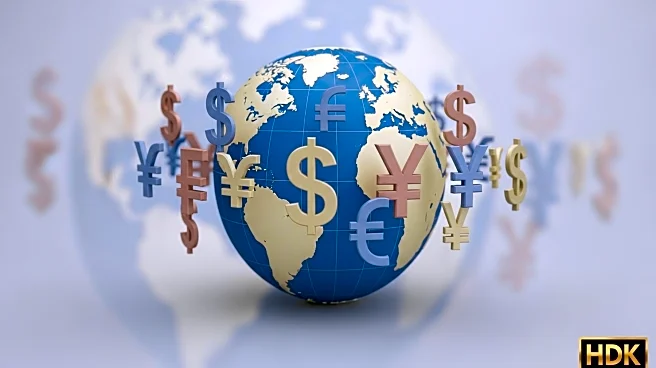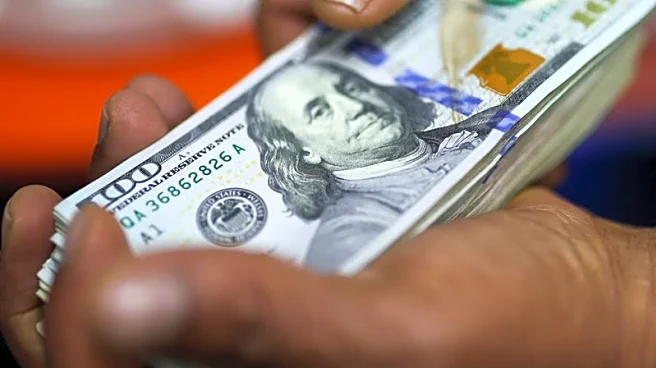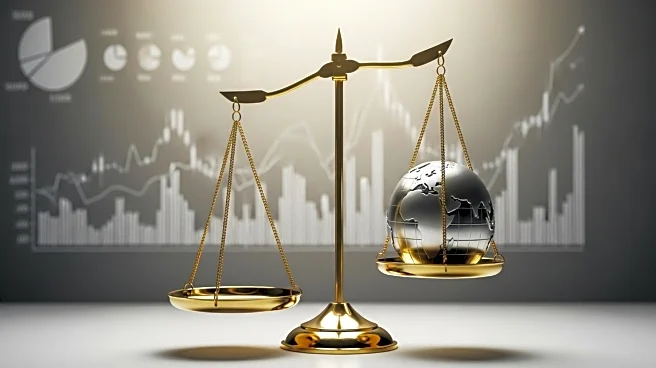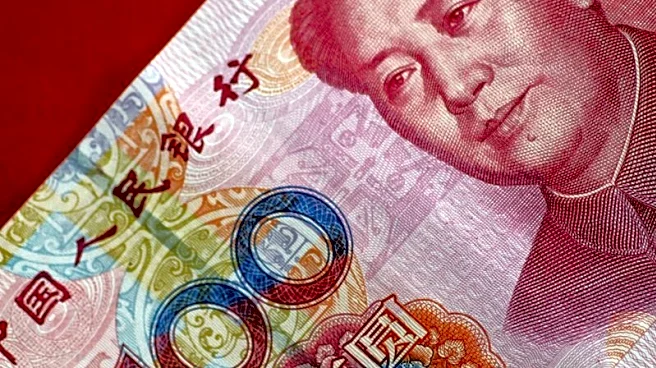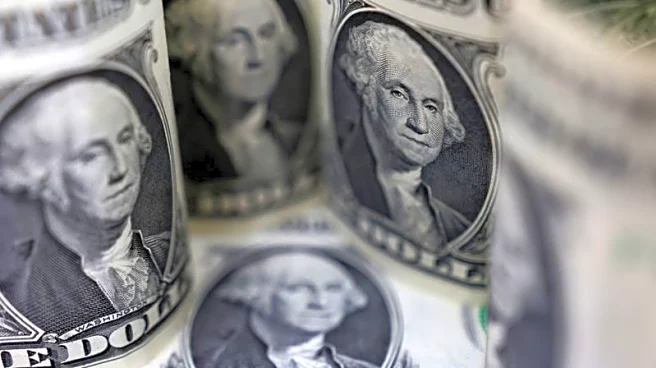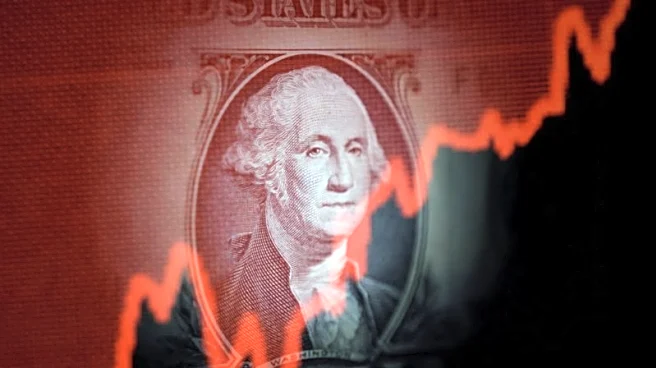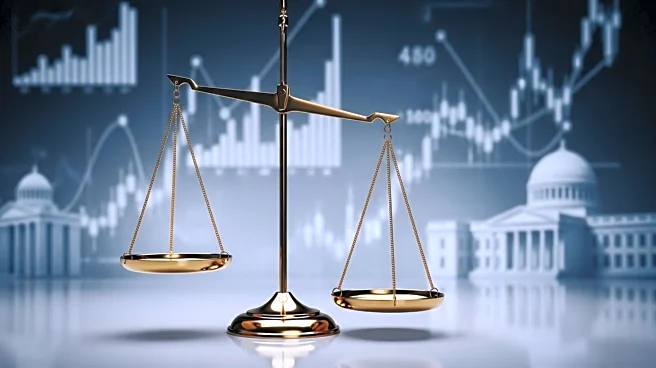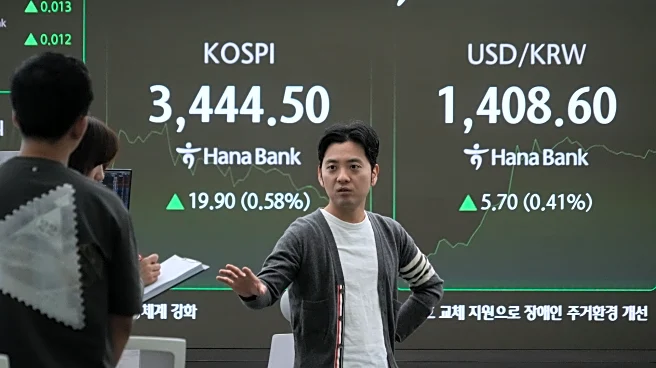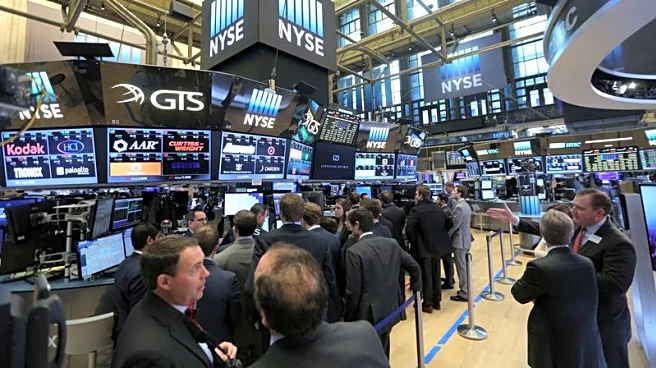What is the story about?
What's Happening?
The U.S. dollar, traditionally a symbol of economic strength, is experiencing challenges due to President Trump's policies. His imposition of stiff tariffs, criticism of the Federal Reserve, and distancing from global allies and institutions have contributed to the dollar's weakened state. Despite these challenges, the dollar remains a significant component of central bank foreign exchange reserves, as reported by the International Monetary Fund (IMF). However, the dollar index, which measures its value against a basket of major currencies, has seen its worst performance in the first half of the year since the early 1970s. This situation has opened opportunities for other currencies like the euro and the Chinese yuan, as well as gold, to gain from the dollar's struggles.
Why It's Important?
The weakening of the U.S. dollar has significant implications for global trade and economic stability. As the dollar's value declines, it affects international trade dynamics, potentially making U.S. exports more competitive but also increasing the cost of imports. This shift can impact inflation rates and consumer prices in the U.S. Additionally, the dollar's status as a reserve currency is crucial for global financial markets, and any perceived instability could lead to shifts in investment strategies worldwide. Countries and investors may seek alternatives, which could alter the balance of economic power and influence international monetary policies.
What's Next?
The future trajectory of the U.S. dollar will likely depend on several factors, including ongoing U.S. economic policies, global geopolitical developments, and the responses of other major economies. If President Trump's policies continue to create uncertainty, it may further erode confidence in the dollar. Conversely, any stabilization in U.S. economic policy or improvement in international relations could bolster the dollar's standing. Financial markets and central banks will closely monitor these developments, adjusting their strategies accordingly to mitigate risks associated with currency fluctuations.
Beyond the Headlines
The current situation with the U.S. dollar also raises questions about the long-term sustainability of its dominance in global finance. As other currencies and assets like gold gain traction, there may be a gradual shift towards a more multipolar currency system. This could lead to changes in how international trade is conducted and how countries manage their foreign exchange reserves. Additionally, the ethical and strategic considerations of relying heavily on a single currency for global transactions may prompt discussions on diversifying economic dependencies.
AI Generated Content
Do you find this article useful?
